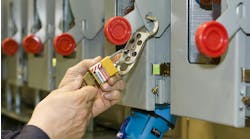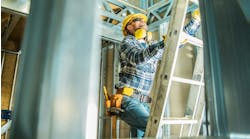For too long, the construction industry has remained a laggard in adopting and embracing new tools, processes, and best practices for enhancing productivity. The $800-billion sector only allocates about 1.5% of revenue on technology spending, making it the lowest technology investor across all industries. This is largely because the sector has not prioritized productivity-driven efforts.
Importantly, we are seeing construction evolve in response to critical external and internal factors that continue to push innovation forward, further disrupting the industry. Collectively, this all lends itself to making productivity top-of-mind for today’s project teams. Increased productivity is taking shape in the adoption of new technology that improves visibility, ensuring deadlines are met, quality improves, processes are more efficient and repeatable, and profits increase.
How the industry has changed
Even before the pandemic, the industry began to experience a few critical changes that increased the need for improved productivity.
A significant factor is the continued concern surrounding construction’s labor force. As evidenced across the sector, the current labor force is aging and retiring, while younger professionals are opting not to pursue careers in construction. This results in a short supply of skilled people in the field. In fact, according to the U.S. Chamber of Commerce’s Q3 2021 Commercial Construction Index (CCI), 92% of contractors are facing difficulty finding skilled people, with 42% of contractors turning down work because of the shortage.
Luckily, contractors are identifying new ways to move forward in today’s limited labor market. They are pushing the industry into new territory ― off-site construction.
COVID further accelerated the adoption of prefab processes, as teams went remote practically overnight and could not continue working at job sites as usual. Sixty percent of contractors said they experienced project delays due to COVID, according to the same CCI report cited above.
As teams navigated the changing industry, off-site construction quickly became the answer. Teams could continue to make progress on their largest projects off site, improving productivity and positively contributing to safety.
All in all, prefab is a growing best practice in making people in the field more effective and teams more productive.
Adopting prefab and its benefits
For those electrical teams ready to leap into the prefab game, “kitting” is an effective process to reap the off-site benefits.
Kitting, the process of pre-packaging all needed components for a certain space ― a room, entire floor, every bathroom, etc. ― into one kit, is becoming a leading strategy for driving efficiencies. These kits can then be delivered exactly when needed to the job site, meaning less time is spent on locating, gathering, and distributing individual components in the field. Additionally, important space is saved and multi-handling of products is reduced on the job site, as kits are delivered when needed. Kitting increases productivity, efficiency, and accuracy.
According to a recent report from Dodge Data & Analytics, 90% of contractors saw improved productivity, quality, and schedule certainty by adopting prefab.
With kitting, the prefab team can focus on quality, ensuring things are assembled correctly before sending them to the field. As more work is performed in the shop rather than the job site, teams minimize wastage with surplus materials being stored and allocated for use on future projects, contributing to a greener process. The same Dodge Data & Analytics report cited above found that 85% of contractors reduced construction waste with prefab.
Aligning prefab with productivity efforts
As with any process improvement, to ensure prefab initiatives improve and optimize productivity, these efforts mustn’t become a black box. For example, those in the field should have visibility into ongoing work in the prefab shop, along with production timing, shipping dates, and more. This helps ensure that kits are brought to the field at the right time.
When we think about the full scope of factory production, it’s important to note that the total workload being completed in the prefab shop includes both planned work and field requests. With this, the field must drive the priorities of the factory ― visibility and control help ensure that this takes place.
Automated, coordinated, and properly managed production, through real-time transparency, is changing how teams complete field requests. In the past, they might opt to assemble a building component in the field and risk safety and accuracy, but new processes are replacing these antiquated and risky endeavors. Teams are sending field requests to the factory, knowing how and when that kit will be completed and shipped, reducing risk.
Identifying life-cycle improvement opportunities
With prefab processes, increased productivity becomes an achievable reality and allows today’s contractors to evolve in response to the industry. The enhanced visibility and control allow teams to manage the whole project life cycle (plan, buy, make, deliver, and install) efficiently and safely.
Digitizing processes results in continued improvements, as teams save money and make schedule enhancements that positively impact workflow. Changes such as these allow teams and companies to prioritize a culture of continuous improvement, as they can assess and understand what’s working and what isn’t. With this information, they can continue to make small adjustments that ultimately result in a better whole.
Off-site construction remains a key method in increasing productivity and aligning with industry trends. Recent data shows that the prefab market will be valued at more than $106 billion by 2027, which is a dramatic rise from its $68 billion valuations in 2019. The benefits are real, as more people adopt and look toward the future of the industry.
Raghi Iyengar is the CEO of Manufacton/ViZZ Technologies. He can be reached at [email protected].



